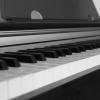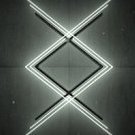Leaderboard
Popular Content
Showing content with the highest reputation on 07/05/2014 in all areas
-
Though very impressive technically, I actually find the footage looks quite unpleasant in how unnatural it looks. I can't put my finger on it but I guess I dislike the look in the same way I dislike the full spectrum uv modded camera images. I'd have loved to see the footage graded to show how our eyes see things. I'd really like to see some nature work done with this camera. It seems to look over digitised with manmade light, whereas a dusk woodland scene (exposed and graded to mimic how our eyes adjust to very low light) will probably be where this camera comes into its own.3 points
-
Hey Inazuma, thanks for the "aperture" hint! So i if i go with the manual setup i still get a good DOF with all lenses... Sure its not that strong, but still enough for me.2 points
-
Yeah, with the hack you can grade your videos, because the compression artifacts almost dissapear. Before you couldn't do anything because the ugly blocks would show with any minor adjustment. I finally came up with a workflow which gives me exactly the look I like (you just have to film with white balance off a little into the blues and remove it later with a curve, suddenly the color problems seem to be gone). The only thing I miss is detail on far subjects, but that's a thing for 4K. I will keep the d800 until a 4K 10bit internal camera comes around which also offers the d800 stills quality (unless used phase one backs go under 3000€, I want that iq280 so badly). btw, great work tusoli.2 points
-
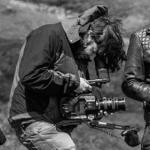
Found Sony a7S for £1339.50 brand new?
MiL0 reacted to Oliver Daniel for a topic
As I'm really interested in the a7S, I had a browse around for prices and came across this: http://panamoz.com/index.php/sony-ilce-7s-alpha-7s-a7s-full-frame-cmos-digital-camera-body-only.html They are selling the a7S brand new for only £1339.50 inc.VAT, if paid by bank transfer. This is insane, considering other online stores in the UK are selling for around £2099. Does anybody know anything about this website? Why is it so cheap? Anything suspicious or 100% definitely correct? Thanks!1 point -
This is making me wonder which is better, realistic low light that uses the actual light in the scene, which is also going to be artificial at night (street lights or candles etc) or additional lighting techniques to simulate night.. in other words, what is going to look more "real" to a viewer, the one that is more real or the one that is more fake? I'm gonna guess that most people would criticize reality of looking fake, but you could use the A7s for either scenario.1 point
-
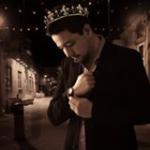
An astounding Sony A7S low light test by Philip Bloom
Leica50mm reacted to Edward Zaee for a topic
It's like HDR photography, sucks big time. But some ppl love it. :D1 point -

An astounding Sony A7S low light test by Philip Bloom
Orangenz reacted to Andrew - EOSHD for a topic
This is entirely your fault fuzzy, see the forum chaos you have caused!1 point -

An astounding Sony A7S low light test by Philip Bloom
Orangenz reacted to fuzzynormal for a topic
Interpret the almighty emoticon.1 point -

Found Sony a7S for £1339.50 brand new?
Andrew - EOSHD reacted to richg101 for a topic
use a credit card rather than bac's. the extra security is worth the £100 extra. if there's a problem i'll get mastercard on their ass1 point -
I agree with Dahlfors there are several things to compare to talk about good or less good cameras. First what is your style? Publicity, nature, macro, portraits, fashion, journalism, art and museum printing? All of that? This will help you know if you look more towards APSC or full frame, full frame with 12mp, 24mp, 36mp or more... Comparing high iso, for example, on a 5DmkIII I am at 3200 iso when I am at 800-1000 iso maximum on a nikon D800 for the same results. So, yes, for me the Nikon D800 is good enough comparing to a 5DmkIII, yes it behaves worst at 3200 iso than the 5D but if you know these two cameras and practiced them a lot you see that you have to compare a bit differently than just in the specs because in this precise example, the 3200 iso should be considered as having the same results than around 1000 iso on a D800. About quality for stills on the internet, I confirm what dahlfors says, it will always look shitty on a 1080p screen compared to paper, wich gives you full potential and depth about color, contrast, etc, simply because it has muuuuuuuch more resolution than any screen available today, even in 4k. Professional paper-print meets around 70mm celluloïd résolution (around 12K resolution If I am not wrong, yes we will get it one day, no you can't really measure the depth of your colors on the internet with compressed picture from crappy jpeg, yes that is why all professional are obsessed with calibration to get the more they can of what they see on screen and it justifies great gammut screens to be sooo important). Then, about what reason drives the megapixel run? Really, have you ever achieved a 2meter by 3.5 meters on a museum wall with a 24mp camera? Yes you can but you make an upscale of your print and drain a lot of quality away from it. It will simply never looks exactly like what you thought you had on a smaller scale. So if you make publicity for biiig brands, you had the following solution before the D800E: Hasselblad, mamiya, 70mm and 24x36 celluloïd. Nikon changed this with the D800, so yes there is a way to see this camera as a real need if it fits certain domains of your work or creativity. Size does matter with the size of your prints and also it need to be done very well, wich is the precise improvement with d800, a 36mp that helps to skip completely hasselblad, leica, mamiya, and use all the lenses that you work with everyday on your other projects. If I shoot sport models for an event and then get the opportunity to print it on the town hall of the biggest cities of the world I don't mind anymore, I stay confident with it I have the strongest 8K stills possible and may not need any upscale. Knowing your applications, knowing you creativity, knowing your market and fitting their needs is what makes you choose even some cameras that might look like not so good in everything, precisely because you need them for what they do so well. Furthermore, why does everyone suggest that when you buy one brand you don't buy the others? I need canon for certain things like softness, very special bokeh, I need nikon for other things, like more crispy images, more mechanical works, and I need leica for others, like dramatic nature, etc... But from my D800, I stopped completely using Leica, Hasselblad, Mamiya for my stills. And I still like canon for the easy picture styles they put in their cameras, really it is a full color station in a tiny body. On the D800, the dynamic range is so big that even with 36mp you can recover low light very easily and shoot more instinctivly, is there a test or internet talks about going easily instinctive with a camera? Not really, they speak about buttons positions etc but never can make you picture it fully. For my experience, D800 sensor and its 36mp really made the trick for me, I simply don't mind anymore. Would I get a better view in low light with less resolution? Yes. Is it my style of concieving photography? No. As I realised that my choice was made. So there is a limit to testing without touching, there is a limit to knowing all without using. You have to know what you want to do with it to get what you need. There is a limit to see pictures without looking at them printed, celluloïd lost the battle for the source but today paper still wins the print and from good to very good, you'll see a lot of differences in the final result at an exhibition, for example. ;-)1 point
-
Pretty sure he was being sarcastic :p1 point
-
Looks like the a7T will be a perfect camera. :)1 point
-
That answer is not as easy as "it's what the market and buyers think". Canon has a lot more varied business: scanners, printers, professional range of video cameras = many sectors to make income on, which Nikon and a few other camera makers don't have. Nikon's business has been point & shoot cameras, aps-c & full format dslrs, in addition to lenses and accessories. For Nikon point & shoot cameras were a major part of their total revenue and earning - and we all know what happened to that after cameras in phones became decent enough... If Nikon can lure APS-C users to upgrade to full frame, they can sell D800 and D610 bodies at lower prices while earning more in total since people buy lenses as well. This is the most likely reason to why D600 was introduced in the first place and why they've been dropping the price of D800 so quickly. Nikon and a few other manufacturers without a broad product range is in a bit of a tight spot due to changes in the market during the last few years: http://www.dslrbodies.com/newsviews/cipa-numbers-still-trending.html ... To those who don't know how well D800/D810 performs for stills, I just say: try them. When you learn how to push that camera & sensor, you'll be amazed at what you can shoot that just isn't possible with most other cameras. I recently shot without a fill flash in really harsh sunlight because I've used the D800 for 2 years now and I've learnt how the sensor performs. With 12-stop DR cameras that shoot had never been possible without losing info in highlights or shadows - fill flash had been a must, and therefore the look would not have been as natural. Whatever camera you use - push it and learn the limits of its performance, to know the boundaries and how to use it as a tool. If you've done that, and compare any of those bodies where you've learnt to take the most out of the dynamic range, how to push the sensor for low-light etc - and compare it to when you push the sensor of the D800 - you're surely doing something wrong if you can't comprehend the usefulness of its performance. And no, I don't think you understand it by having an internet connection. By knowing the light at the capture and when you push the images in Lightroom - that's when the major surprise occurs, when you know how other sensors would have performed in the same light (or if you you compare it to another camera on the shoot). Seeing an exported image on the internet doesn't tell the full story.1 point
-
Hi. This is a video I did to test my recenly arrived Sigma 18-35 with the Metabones speedbooster. Editing and grading in FCP 71 point
-
According to 4/3 Rumors, a reliable source says "Gamma Log" is coming in a firmware update. http://www.43rumors.com/ft4-gh4-firmware-upgrade-will-add-gamma-log-and-dave-dugdale-leaves-canon-for-the-gh4/#disqus_thread1 point
-
I've worked with Alexa LogC, Canon Clog, Sony sLog in post and on set, the real difficulty is exposing correctly. Because of the way a log gamma bends the response of the camera, it's easy to overexpose, even though exposure looks right on screen, so expose conservatively or you'll put the skin and the like on the severe end of the log curve. In post, it's best to source an LUT for your chosen log as a starting point, and work from there. For Canon Log, the Abel Cine Clog to Wide DR Full Range is best. For Alexa Clog, Arri's website contains all the LUTs you need. For Slog you can get away with Cineon LUTs as a starting point. To answer the specific situation there, you'd recover the scene as it was shot, with the extended highlight benefits of log. So once you apply your LUT your colour saturation returns, you have full black and white and it'll look more like it would had you shot in Rec709, except you'll have more highlight range to play with. If you overexposed on set, the LUT will clip out the tops. With some LUTs you can just pull back the highlights and recover, be aware that some just slice ff your overs though, so experiment. In 8-bit, yes it's much harder to use log, because the colour space is very unforgiving. Canon are clever about how they do 8-bit in some way, so it's pretty good. Alexa is better of course.1 point
-
In mathematical terms Logarithmic scale is: "... a scale of measurement that displays the value of a physical quantity using intervals corresponding to orders of magnitude, rather than a standardlinear scale. The function of the curve may include an exponent, which is the source of its curved nature." Translation, it's a curve. In digital camera terms it usually refers to a profile curve that is built into a camera's firmware that is going to select the bits to encode from the scene, to the eventual file, but that file will be recording 256 (or fewer) integers if it is an 8bit format. If you want to retain the typical full range (and have it be usable) of a camera's log profile, you will want to encode to 10bit. Most log profiles consider middle gray as 18%, not 50%, because our eyes see 50% as almost white, and require 10bits to cover the full range. Log profiles often look "flat" and can vary in their "flatness" based on the profile. The original source of the flatness was not desirable as much as necessary to reproduce a print and include more dynamic range, but it also can allow more details to be drawn out, assuming you have the color depth. So basically, a log profile might not be desirable when shooting rec709 8bit, but this is the source of much (much) debate. A LUT is a color lookup table and has more to do with post and changing the way you interpolate a file, although it can be used for lots of other conversion needs. Gamma log seems redundant to me, I'm confused by that one, that's kinda like "Scientology", i.e. the study of science.1 point
-
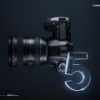
cheapest camera for perfect green screen work
pablogrollan reacted to mtheory for a topic
BMCC is 4:4:4. I have keyed 4:2:0 footage successfully ( 5D2 H264 ), but it takes me about 3x times longer, plus some shots got spoilt because my DOF was too shallow and the edges of actors were too blurry. With BMCC, the sensor is much smaller and your actors' contours will always be very sharp. You can always add DOF in post, but taking it out is impossible. Plus, with 4:4:4 you will be able to adjust exposure and the 2.5k will provide a better pixel sensitivity for your keyer. In fact, if you absolutely, definitively want the best key in the world, shoot your actor in portrait mode...that should give you an equivalent of a 4K RAW 4:4:4 vertical resolution...the absolute top notch image for keying and compositing into something else.1 point



.jpg.9b121eab27f20cdf47d248cffc4023a3.thumb.jpg.5cef7b23bb79ad7dfd1ef0358c7a417f.jpg)
